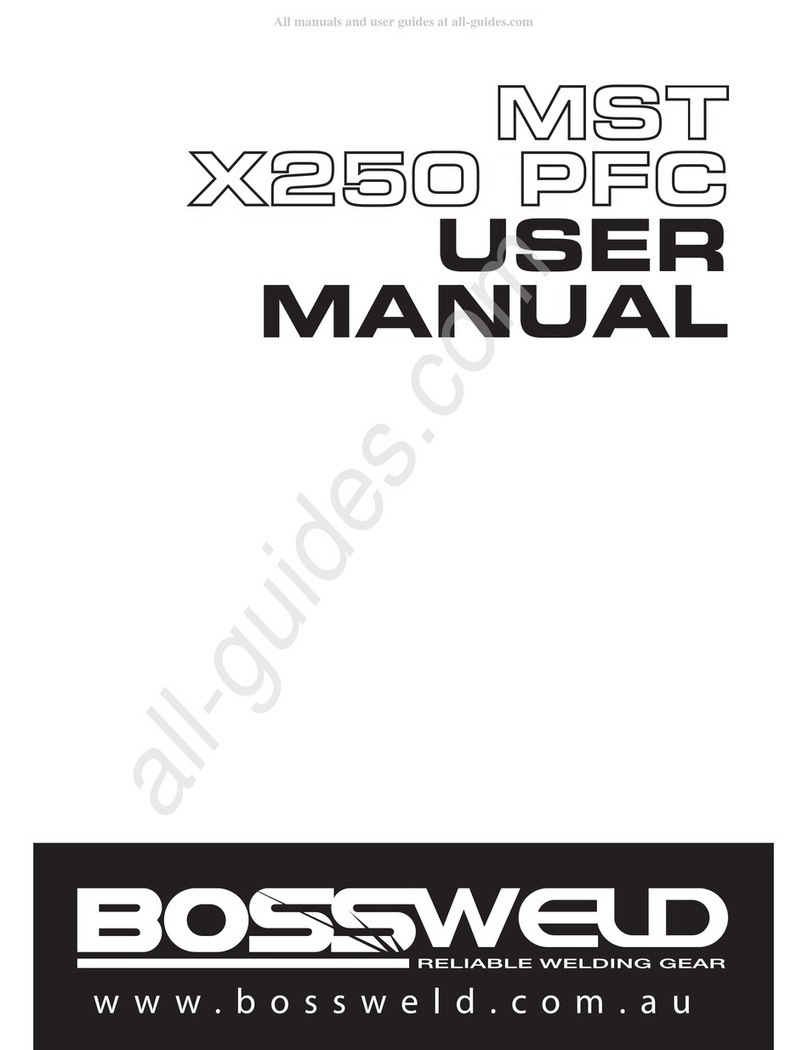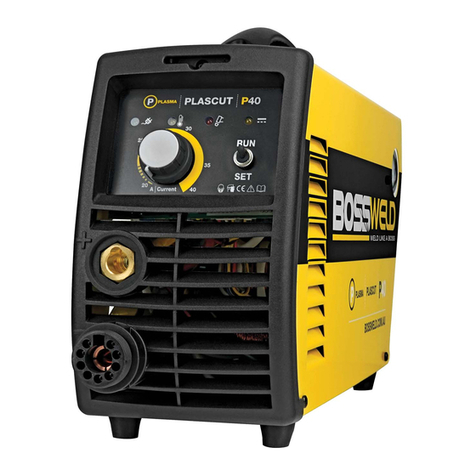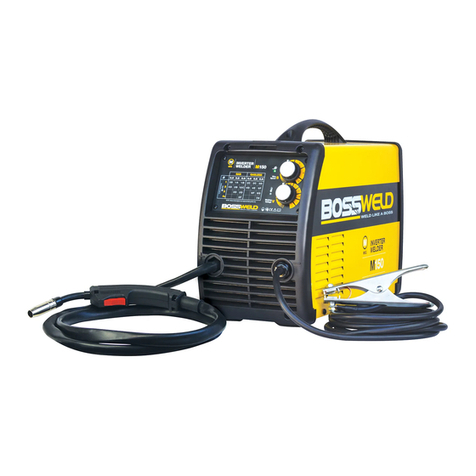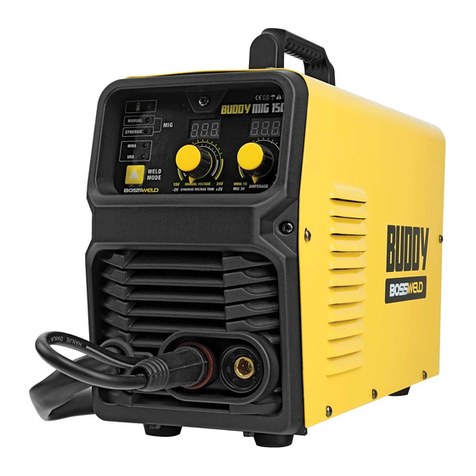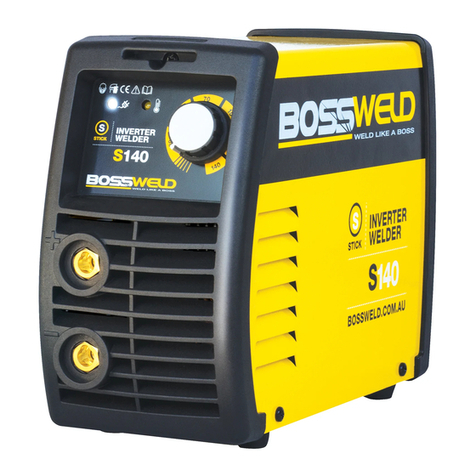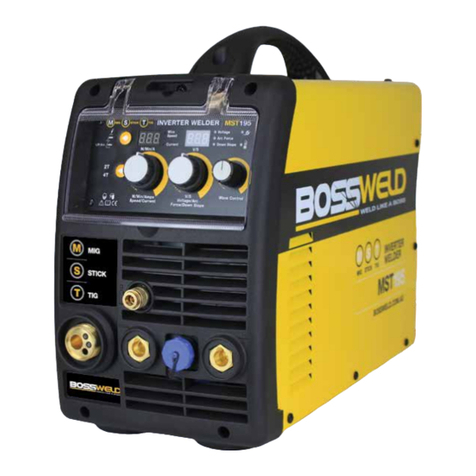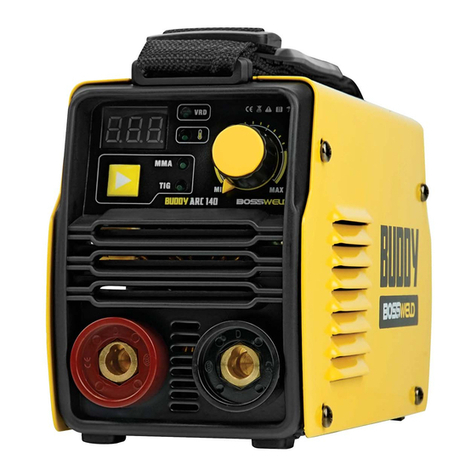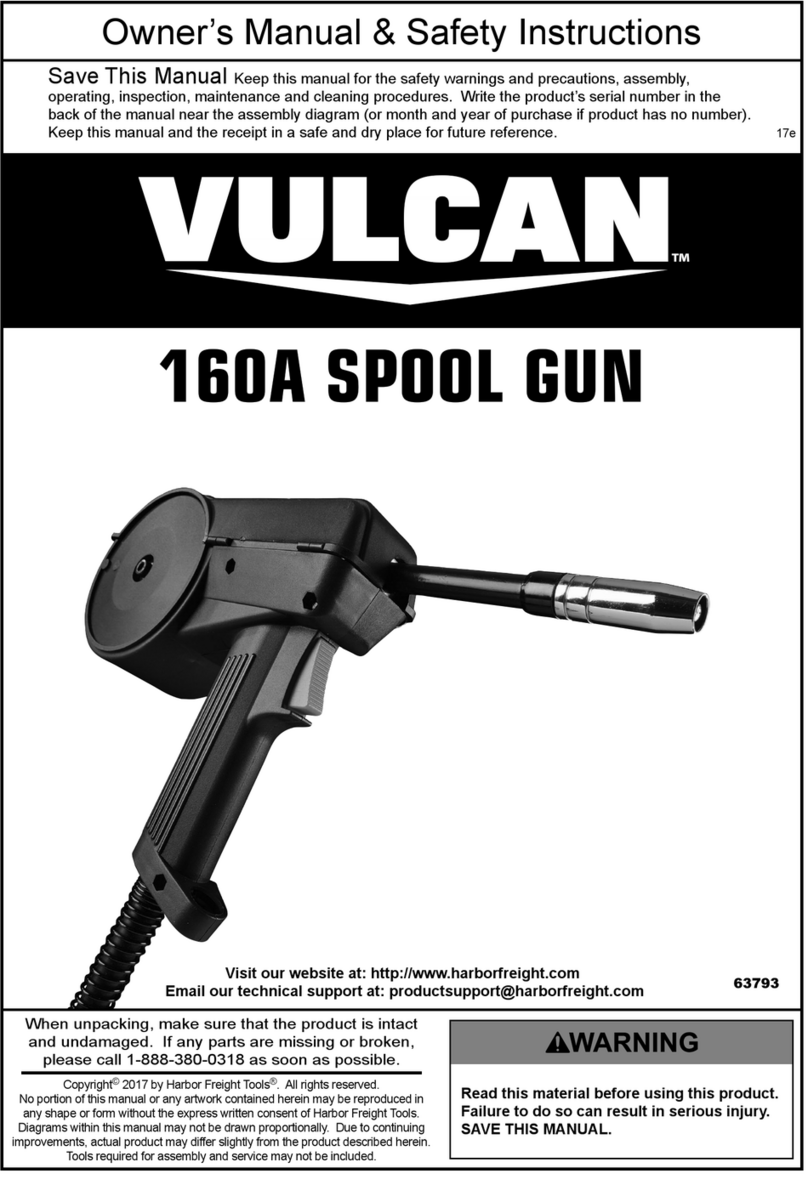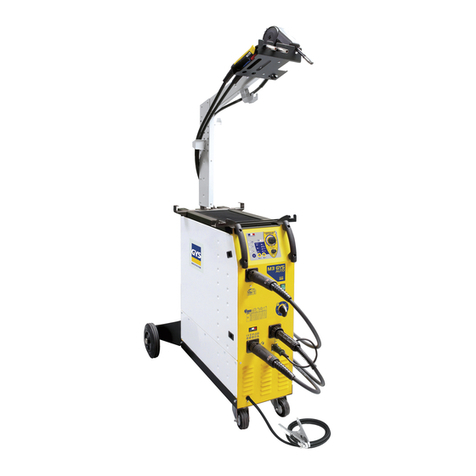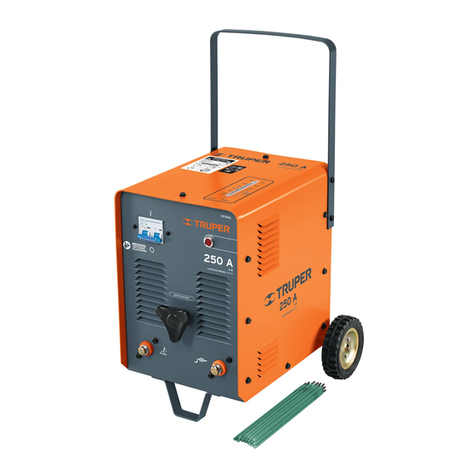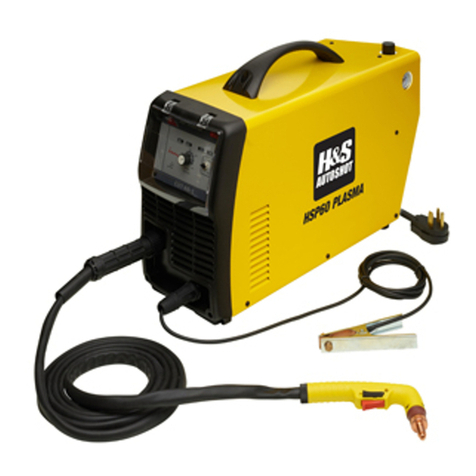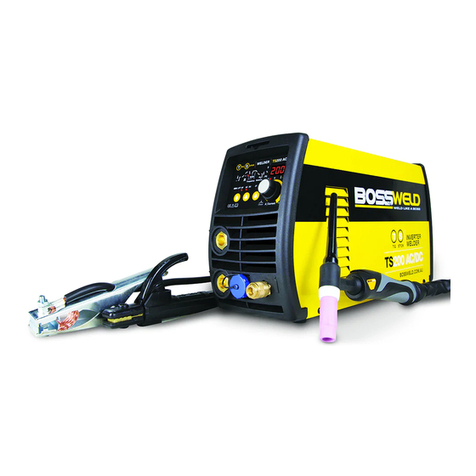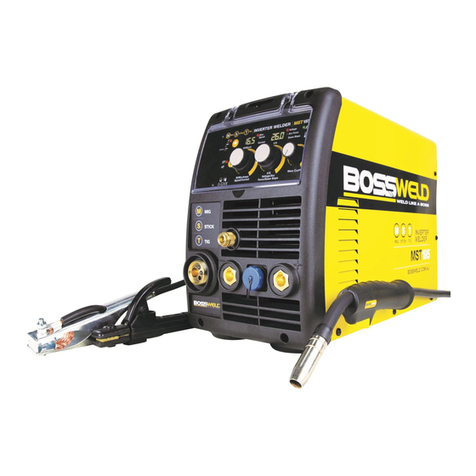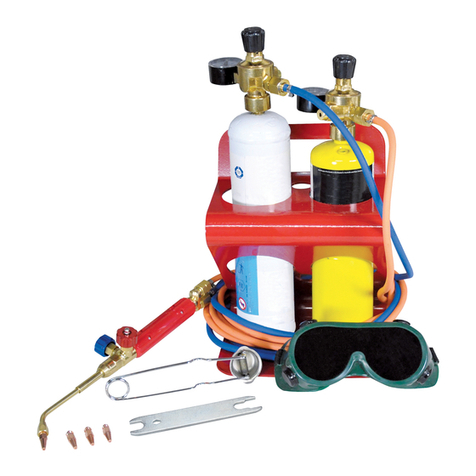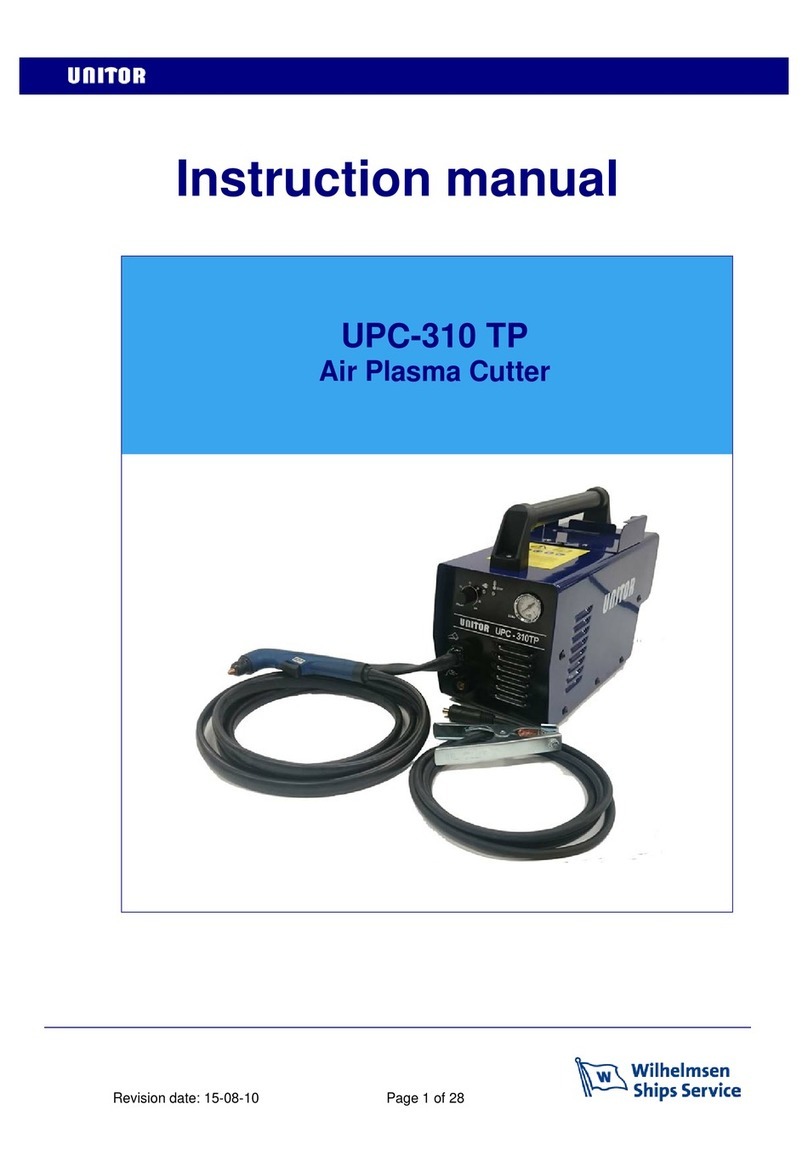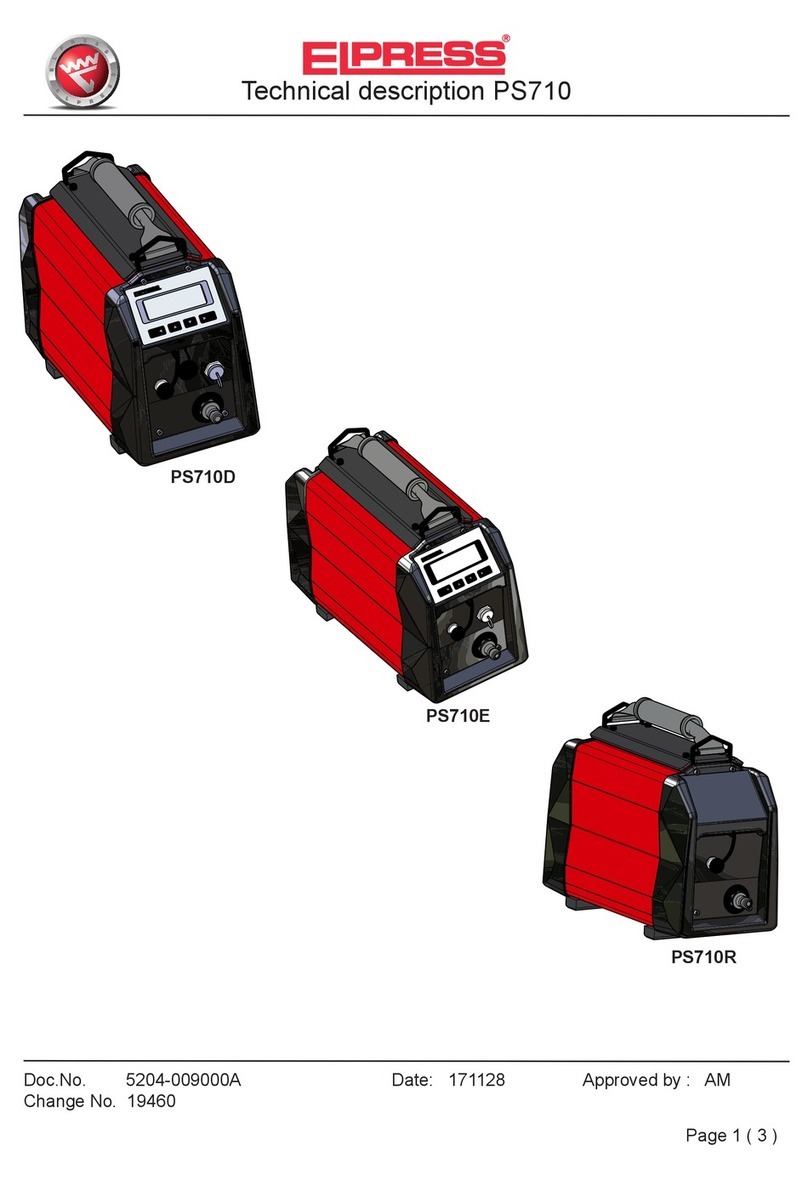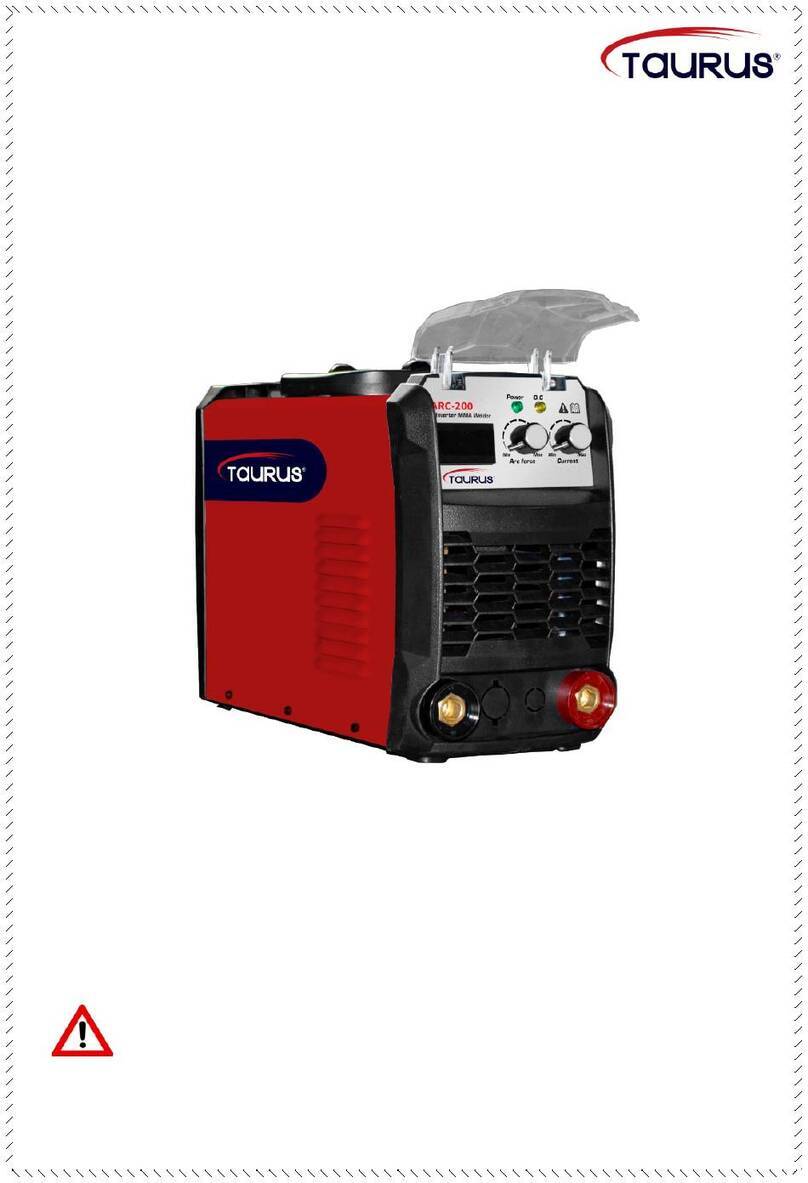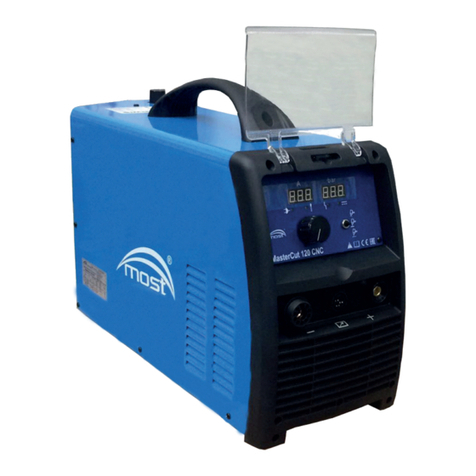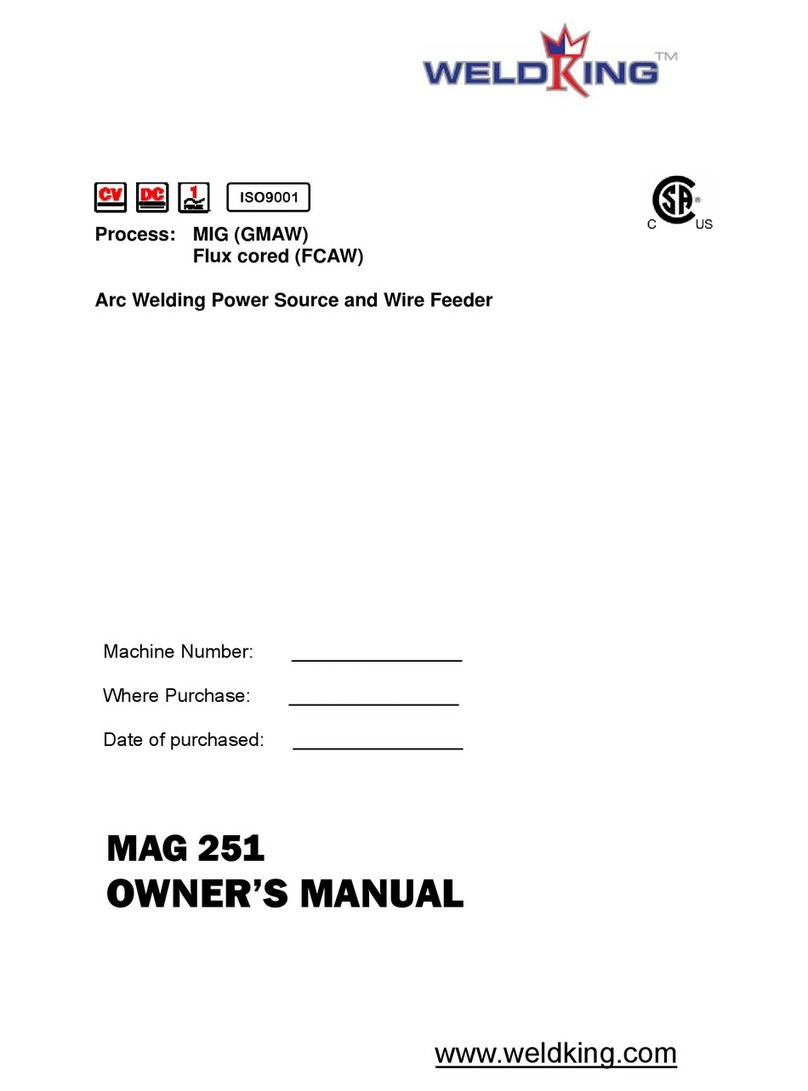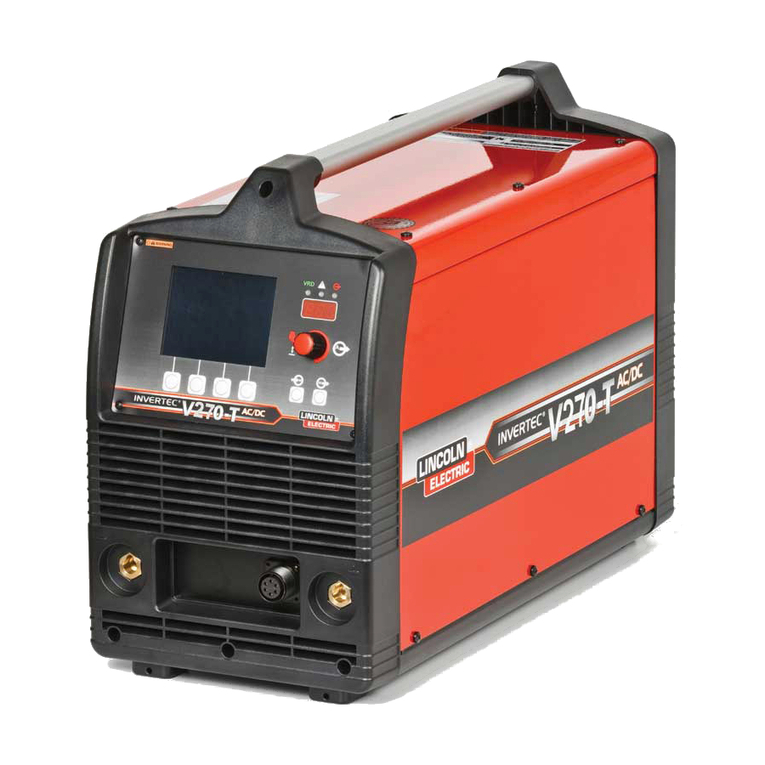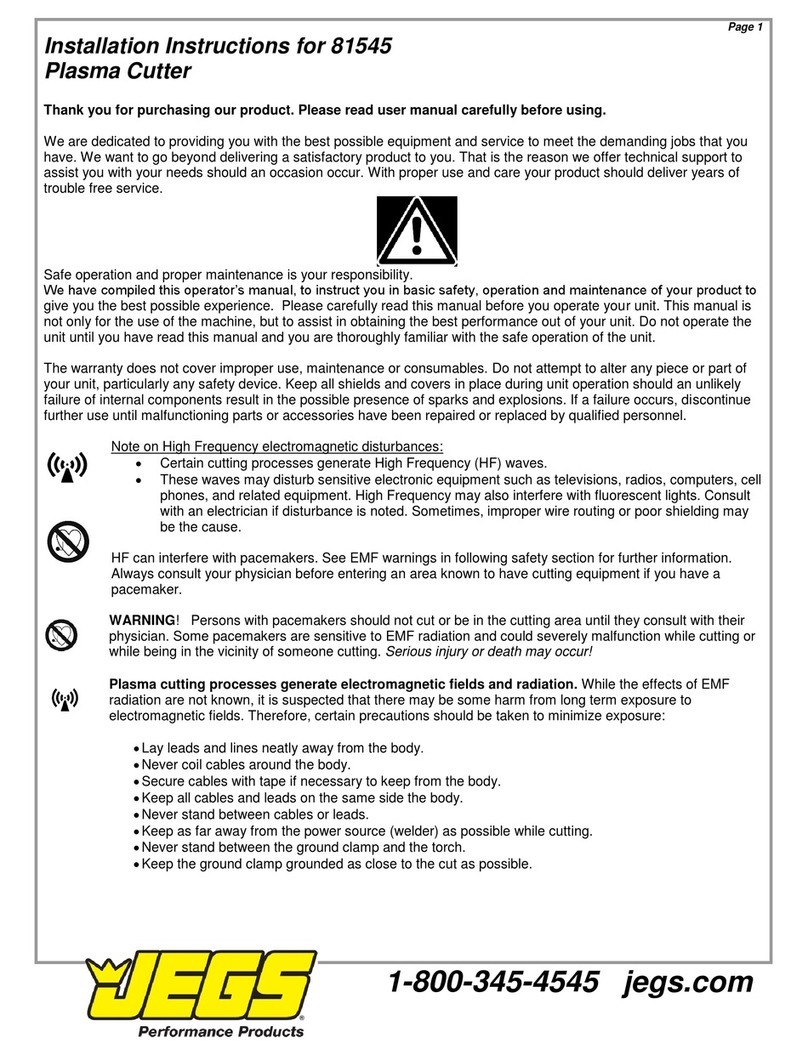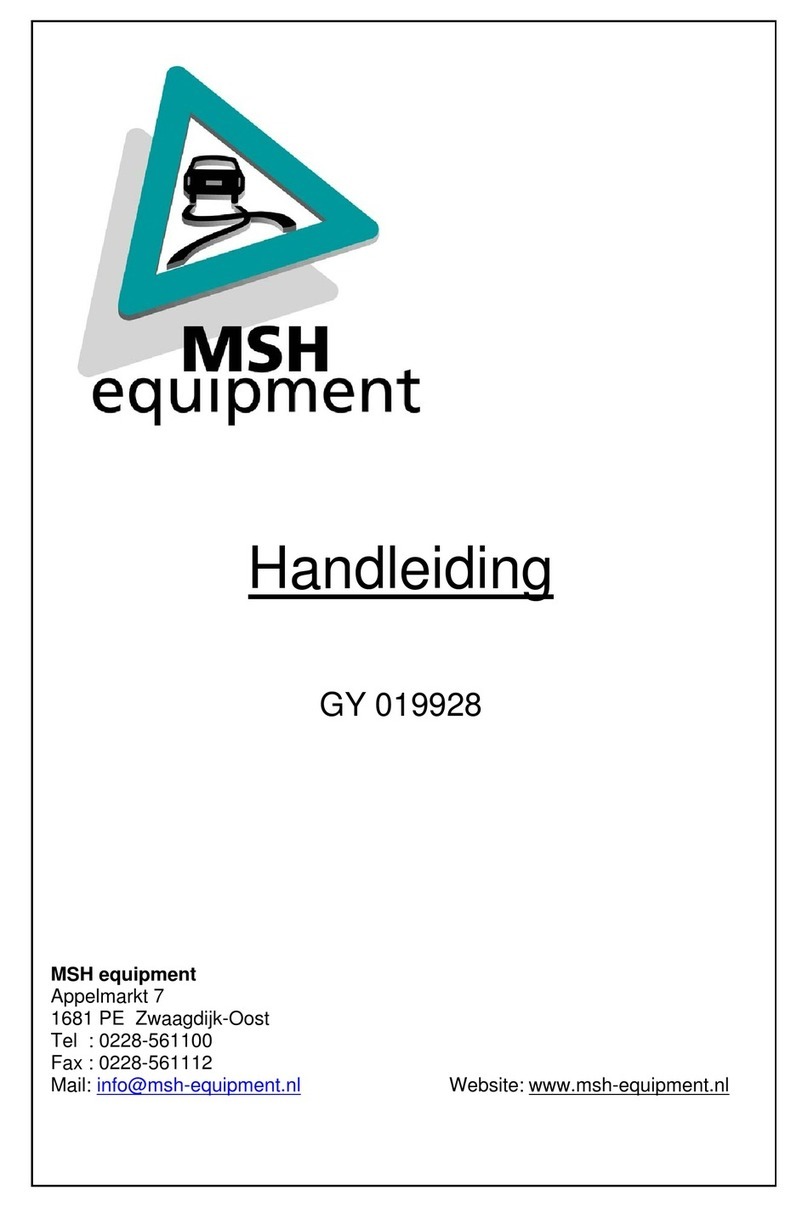
6
ELECTRIC SHOCK CAN KILL.
Touching live electrical parts can cause fatal shocks or severe burns. The electrode and work
circuit is electrically live whenever the output is on. The input power circuit and internal machine
circuits are also live when power is on. In Mig/Mag welding, the wire, drive rollers, wire feed
housing, and all metal parts touching the welding wire are electrically live. Incorrectly installed
or improperly grounded equipment is dangerous.
• Never touch live electrical parts.
• Wear dry, hole-free gloves and clothes to insulate your body.
• Be sure to install the equipment correctly and ground the work or metal to be welded to a
good electrical (earth) ground according to the operation manual.
• The electrode and work (or ground) circuits are electrically “hot” when the machine is ON.
Do not touch these “hot” parts with your bare skin or wet clothing. Wear dry, hole-free gloves
to insulate hands.
• In semiautomatic or automatic wire welding, the electrode, electrode reel, welding head,
nozzle or semiautomatic welding gun are also electrically “hot”.
• Insulate yourself from work and ground using dry insulation. Make certain the insulation is
large enough to cover your full area of physical contact with work and ground.
• Be Careful when using the equipment in small places, falling-off and wet circumstance.
• Always be sure the work cable makes a good electrical connection with the metal being
welded. The connection should be as close as possible to the area being welded.
• Maintain the electrode holder, work clamp, welding cable and welding machine in good,
safe operating condition. Replace damaged insulation.
• Never dip the electrode in water for cooling.
• Never simultaneously touch electrically “hot” parts of electrode holders connected to two
welders because voltage between the two can be the total of the open circuit voltage of both
welders.
• When working above the oor level, use a safety belt to protect yourself from a fall should
you get an electric shock!
ARC RAYS: Harmful to people’s eyes and skin.
Arc rays from the welding process produce intense visible and invisible ultraviolet and infrared
rays that can burn eyes and skin.
• Use a shield with the proper lter and cover plates to protect your eyes from sparks and the
rays of the arc when welding or observing open arc welding.
• Use suitable clothing made from durable ame-resistant material to protect your skin and that
of your coworkers from the arc rays.
• Protect other nearby personnel with suitable, non-ammable screening and /or warn them not
to watch the arc nor expose themselves to the arc rays or to hot spatter or metal.
SELF-PROTECTION
• Keep all equipment safety guards, covers and devices in position and in good repair. Keep
hands, hair, clothing and tools away from V-belts, gears, fans and all other moving parts
when starting, operating or repairing equipment.
• Do not put your hands near the engine fan. Do not attempt to override the governor or idler
by pushing on the throttle control rods while the engine is running.
WELDING SPARKS can cause re or explosion.
Welding on closed containers, such as tanks, drums, or pipes, can cause them to explode.
Flying sparks from the welding arc, hot work piece, and hot equipment can cause res and
burns. Accidental contact of electrode to metal objects can cause sparks, explosion,
overheating, or re. Check and be sure the area is safe before doing any welding
• Remove re hazards material from the welding area. If this is not possible, cover them to
prevent the welding sparks from starting a re. Remember that welding sparks and hot
materials from welding can easily go through small cracks and openings to adjacent areas.
Avoid welding near hydraulic lines. Have a re extinguisher readily available.
• Where compressed gases are to be used at the job site, special precautions should be used
to prevent hazardous situation.
• When not welding, make certain no part of the electrode circuit is touching the work or
ground. Accidental contact can cause overheating and create a re hazard.
• Do not heat, cut or weld tanks, drums or containers until the proper steps have been taken to
insure that such procedures will not cause ammable or toxic vapors from substances inside.
They can cause an explosion even though they have been “cleaned”.
• Vent hollow castings or containers before heating, cutting or welding. They may explode.




















